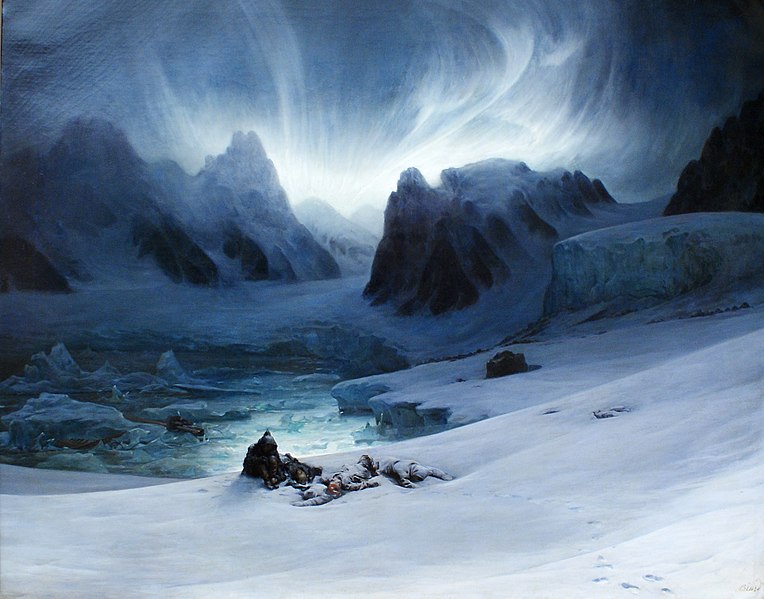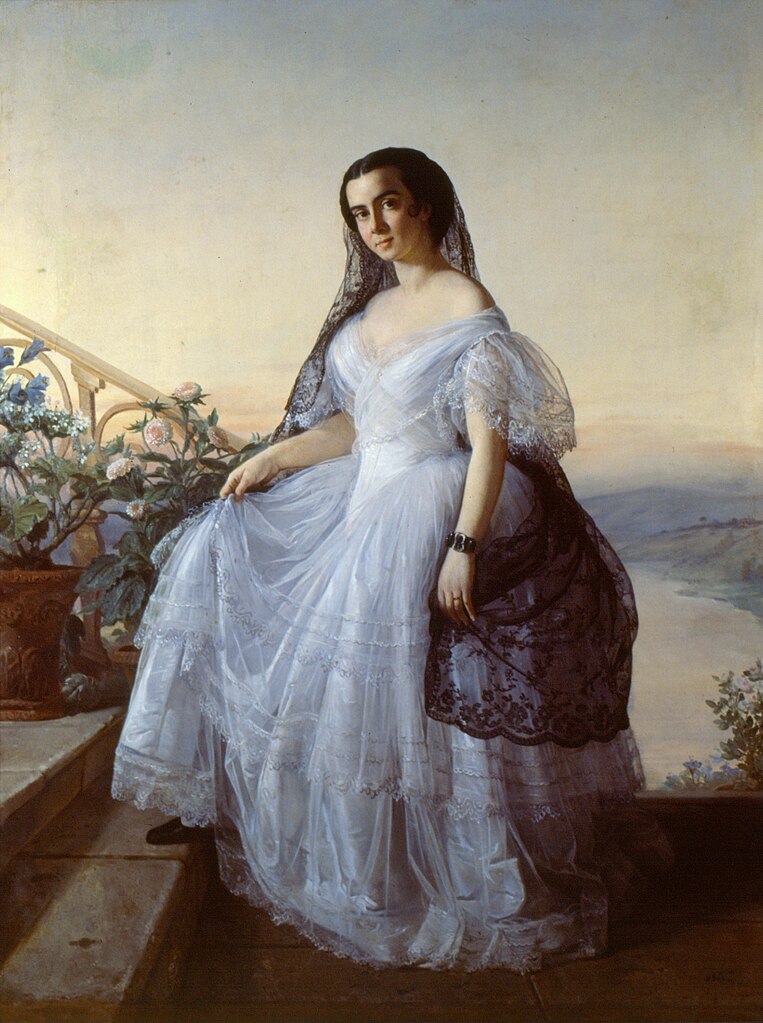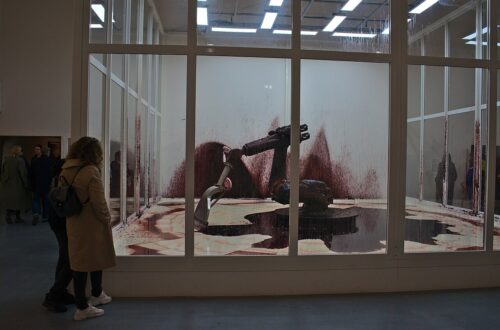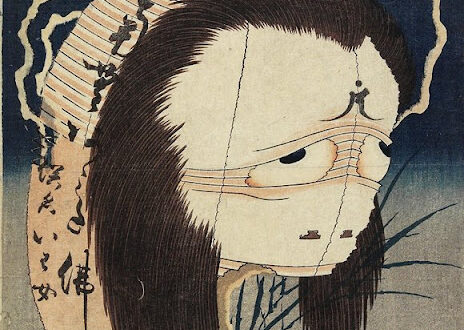
François-Auguste Biard, Magdalenefjorden, View from Gravneset, north of Svalbard
François-Auguste Biard is one of the lesser known painters of the french romanticism. So why did I chose this particular painting of all things? Well, last summer my son and I visited Paris. Of course we also paid a visit to the Louvre. My son is not particularly interested in art so he was a little bit bored. He liked the Roman and the Greek statues, adored the works of the ancient sculptors but was bored with the beautiful paintings. In his view the hype around the Mona Lisa is plain ridiculous and incredibly funny to watch – not that I would disagree with his sentiment. We walked around for hours and were pretty tired already until this one picture catched his eye. He fell in love with it. Maybe because of the drama and the beautifully painted landscape. Later he told me that he liked landscape paintings. A little bit at least.
So… I thought I could start with that.
François-Auguste Biard, Magdalenefjorden, View from Gravneset, north of Svalbard, around 1841

We see a snowy, very dramatic, contrasting light and dark landscape of mountains and ice; the fascinating haze of the aurora borealis in the background. On the left the tip of a fjord with pieces of razor-sharp ice and wood, remainders of a shipwreck in the icy turquoise waters, protrude into the landscape. Some people have been able to save themselves from drowning only to find themselves in an inhabitable surrounding. On a mound in front of the water are five people. Some are already frozen to death, covered in a layer of snow. Only one lone survivor cowers into his clothes, his heavy hood pulled deep into his face. He is obviously freezing and trying to make himself as small as possible in order to – unsuccessfully – protect himself from the wind and the cold. A row of footsteps in the snow indicate that there was at least one person who did not give up, who was trying to escape the inevitable fate after being in a shipwreck in an icy hell. The whole painting speaks of the despair this person must feel. There is nothing but ice and snow. No hope. The majestic landscape, as beautiful as it is, is too vast for human life, too alien, too hostile, too lonely.
The painting also depicts what must have happened again and again in that godforsaken place: Magdalenefjorden, Gravesnet is, how the name indicates, indeed a graveyard. 130 people were buried there during the 17th and 18th century and it is now one of the biggest historic graveyards in Svalbard. It was used a whaling station in the beginning of the 17th century but soon given up, maybe because of the harsh conditions.
Biard was trying to depict the incredible beauty but also incredible strangeness of the landscape. As it is quite typical for the romantic era the painter, Biard, was not trying to paint a realistic landscape but wanted to evoke feelings. The viewer is supposed to feel the overwhelming despair and loneliness of the sole survivor. He is supposed to feel the incredible majesty of a strange, hostile landscape. It is like Galitz describes:
“In Romantic art, nature — with its uncontrollable power, unpredictability, and potential for cataclysmic extremes — offered an alternative to the ordered world of Enlightenment thought.” (Galitz, Kathryn Calley. “Romanticism”. In Heilbrunn Timeline of Art History)
Biards Magdalenefjorden falls into the category of the sublime:
“Sublime images, on the other hand, show Nature at its most fearsome; in fact, Burke believed that “terror is in all cases… the ruling principle of the sublime.” There is an awe and reverence for the wild that to Burke was akin to violent passion. Humanity is small and impotent in front of raging rivers, dizzying cliffs and canyons, ferocious animals, and violent storms. These works can also be uplifting, but in a deeply spiritual way. The Sublime emphasizes (sic!) God’s dominion over humanity and considers the possible folly in mankind’s overriding confidence.” (University of Arizona Museum of Art)
Today the Magdalenefjorden it is one of the hot tourist spots because of it’s beauty and it’s easy to reach by ship in the summer months.
But who was Biard? François-Auguste Biard was not your usual well-behaved painter who would sit happily in his studio and paint. Originally he was supposed to become a priest but he defied his parents and became an apprentice in a wallpaper factory in Lyon. It was there where he learnt to paint. Although he was attending the École des Beaux-Arts in Lyon, he often skipped class – in fact so often that he claimed to be “self-taught”.

Source: Wikimedia
Although he loved to paint he loved travelling even more as it seems – in fact he loved travelling so much that around 1860 he declined a teaching position at the Imperial Academy of Fine Arts in Rio de Janeiro in order to travel even more. He travelled to the south, joined an expedition to Spitsbergen and Lapland, went to Malta, Syria, Egypt, and later to Brazil. He became known for his exotic landscapes and his great attention to detail. His paintings show the influences of the English, german, and Dutch painting traditions. He also became one of the first painters to depict the indigenous people and the brutality of the slave trade.




